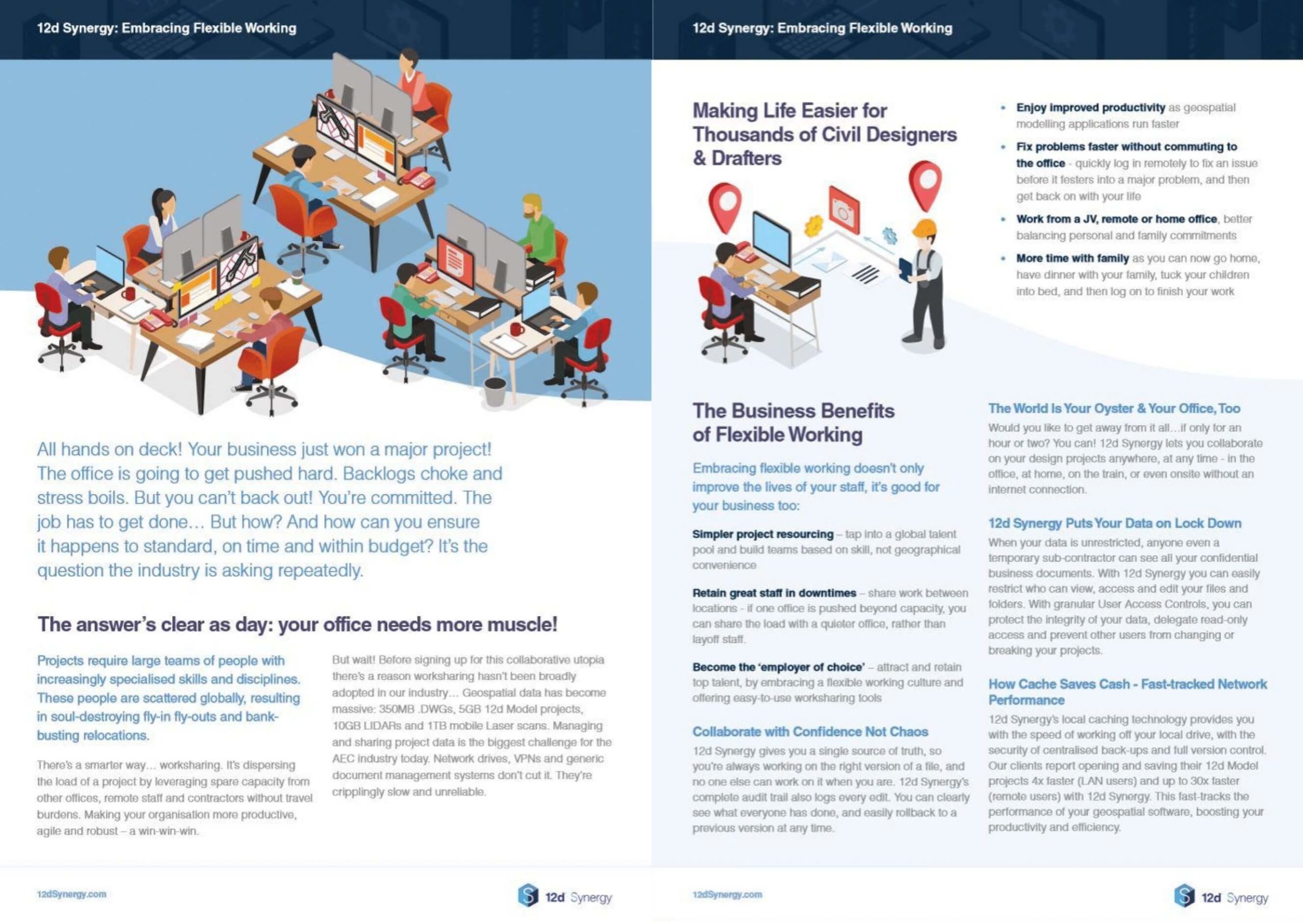Flexible Working for Civil Designers & Drafters

How To Embrace The Flexible Working Environment
Unchain yourself from your desk!
We are in the midst of an infrastructure boom. We are seeing pressures on consultancies mount as they attempt to meet the demand.
As more projects are awarded, Civil Designers and Drafters are taking on larger workloads, which means longer hours stuck in the office away from friends and family. It is time for the system to change.
This webinar shows you how to embrace and deploy a modern flexible working system that will transform your career and your organisation. Say goodbye to long hours chained to the desk in your office.
Watch: Transform Your Life – Flexible Working Environment – Industry Solutions Webinar Series
The Challenges Facing Flexible Working
Flexible working can mean a number of things. It can be collaborating while you’re commuting, working while you’re out with a client, working from a JV office , working on a project from a remote office, or you could be adapting your office hours around your personal and family commitments.
Flexible working doesn’t necessarily mean that your are going to shut the office for good. We aren’t talking about sending everyone home and never seeing them face to face again. One study in the UK stated that 80% of young professionals felt that flexibility was important to their career, however very few stated they would like to work from home all of the time.
As a general rule, flexible working in the civil engineering industry has been a very slow adoption process. That is with good reason. The data sets are so intensive, often the process to share data and collaborate from home causes more problems than it resolves. Poor network connections coupled with large data sets makes the transfer process extremely slow, this includes VPN connections.
There is also the concern that standards don’t translate to external locations. If you are working remotely or internationally there can be issues with standards and styles transferring.
Work-around processes tend to create issues including poor filing and naming conventions which lead to the mismanagement of data. Some generic online systems have also been known to corrupt data, others allow multiple collaborators to write to the same file, at the same time, essentially overwriting each others work.
Are These Issues Worth Resolving?
Yes. There’s two sides of benefits to argue for flexible working. One being the designer/staff side, as well as some extremely positive business and management benefits. You conduct flexible working properly, if you have the right systems in place, you will experience great benefits.
Benefits for Civil Designers:
Essentially your overall personal and professional schedule will have more flexibility. So, you can leave the office early to get home when the kids do. You can arrive late to work from the gym. You might be studying outside of work and you need to free up time to meet those obligations, there are so many different scenarios.
A big ticket item worth considering is that it saves you money. Everyday that you can avoid commuting in to the office is more money in your back pocket. You can get a glimpse at the type of expenses we all pay on commuting in our 10 reasons why civil designers need flexible working article.
Avoid fly-in fly-out. If you’re collaborating with an office in another city, state, or country, you are more than likely required to meet face to face with the rest of the team at some stage. You may need to fly into the design or project office, stay for a certain amount of time. It’s something which flexible working can help reduce, possibly even avoid. This is going to benefit you, provide you with more free time and less time away from home. It is also going to save your organisation thousands of dollars.
Benefits for Business:
Flexible working, if conducted correctly, will save your business time and money. Staff are going to be able to meet their deadlines more efficiently.
As we all know members of your design team can face hurdles which they need to address during the project. A flexible system allows them to maneuver themselves around these barriers in an efficient manner. Even daily barriers like inconsistent public transport, that time can be utilized to catch up on work.
You will start to see that the system can actually improve resource management. As large jobs start coming in for a particular office, you can utilise your flexible working solution to conduct worksharing – sharing the workload from busier staff to quieter staff for a more balanced and efficient workplace.
It’s important to continue to develop and improve company culture. This is something which is hard to achieve with legacy systems. With a modern flexible system put in place, your organisation would be in the position to refresh its culture. Organisations with great culture become an employer of choice, they tend to attract the top talent and experience the benefits of a low staff turnover.
To see how 12d Synergy can introduce flexible working into your organisation, book an obligation free demo below.

To see how 12d Synergy can introduce flexible working into your organisation, book an obligation free demo below.

Author